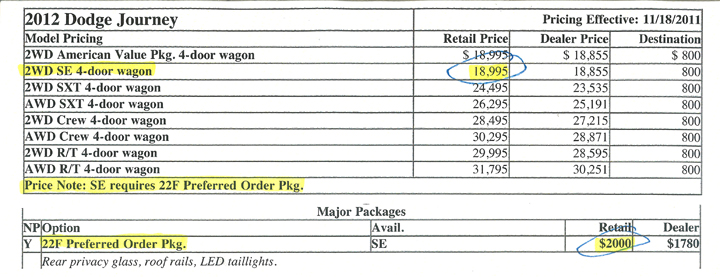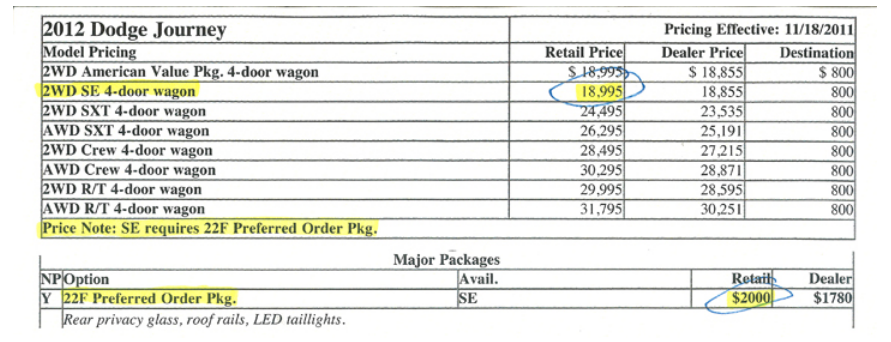
Most people don’t like buying cars. They like inhaling the new car smell while driving home from the dealership, but they don’t like the haggling and anxiety that goes with purchasing a new vehicle. Many blame the dealers, but often the chicanery starts at the factory. Putting a price on the window sticker should be straightforward, but it seldom is. I’ve been tracking car prices for over a decade, and I’m still confused. Here are a few things I’ve learned:
Dangerous Dealers: Servicing Car Potentially as Perilous as Purchasing One
Confusing Window Sticker
The base price isn’t always what it seems to be. For instance, a Dodge Journey SE has a base price of $18,995, but everyone is required to buy a $2,000 equipment package. The real price is $20,995—at least for now. Many automakers raise prices several times a year. It is never too early or too late to add a few hundred dollars to the base price. Common sense would say that as the model year winds down, prices should be reduced to help clear inventory, but instead they often go up. My theory is that these late-year increases make the rebates seem bigger. A $1,000 rebate really only saves the consumer $500 if the car price has been bumped from $19,500 to $20,000.
Options are even more confusing than base prices. The 203A Rapid Spec Order Code for the Ford Focus SE is listed as $1,385, but the real price is $1,195. Farther down the window sticker is a cryptic line called “Total Savings.” This includes the $190 discount for the 203A package and is deducted from the total price. Why would Ford (and several other manufacturers) want you to think an option package is more expensive than it is? My cynical theory is they want the consumer confused. Throwing in unexpected savings might cause the buyer to think the dealer is doing him a personal favor.
The more normal scenario is that an option costs more than you think. Want a power sunroof? Then you have to buy the premium package as well. Sometimes two options require each other. On the Toyota Camry, the Safety Connect System requires blind-spot alert and blind-spot alert requires Safety Connect. Why not combine the two for one price? Some cars even have a special-order fee for certain options. For instance, the $440 power rear sunshade on a Mercedes-Benz C-Class sedan requires a $250 special-order charge.
In the end, the consumer knows what he or she is paying and no one is cheated, but wouldn’t it be better for everyone if the automakers decided what price they wanted for a vehicle and stated it up front?
